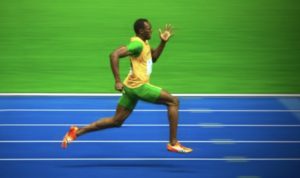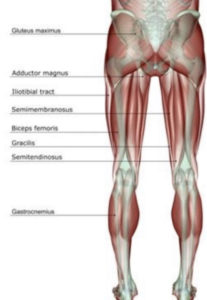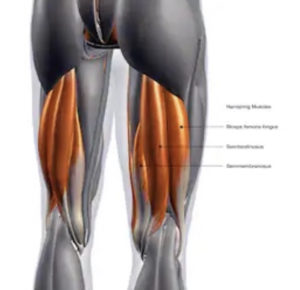Biceps Femoris Architecture and Strength in Athletes with a Previous Anterior Cruciate Ligament Reconstruction
- PMID: 26429732
- DOI: 10.1249/MSS.0000000000000783
Abstract
Purpose: This study aimed to determine whether limbs with a history of anterior cruciate ligament (ACL) injury reconstructed from the semitendinosus display different biceps femoris long head (BFlh) architecture and eccentric strength, assessed during the Nordic hamstring exercise, compared with the contralateral uninjured limb.
Methods: The architectural characteristics of the BFlh were assessed at rest and at 25% of a maximal voluntary isometric contraction (MVIC) in the control group (n = 52) and in the group who had previous ACL injury (n = 15) using two-dimensional ultrasonography. Eccentric knee flexor strength was assessed during the Nordic hamstring exercise.
Results: Fascicle length was shorter (P = 0.001; d range, 0.90-1.31) and pennation angle (P range, 0.001-0.006; d range, 0.87-0.93) was greater in the BFlh of the ACL-injured limb compared with those in the contralateral uninjured limb at rest and during a 25% MVIC. Eccentric strength was lower in the ACL-injured limb when compared with the contralateral uninjured limb. Fascicle length, MVIC, and eccentric strength were not different between the left and right limb in the control group.
Conclusions: Limbs with a history of ACL injury reconstructed from the semitendinosus have shorter fascicles and greater pennation angles in the BFlh compared with those of the contralateral uninjured side. Eccentric strength during the Nordic hamstring exercise of the ACL-injured limb is significantly lower than that of the contralateral side. These findings have implications for ACL rehabilitation and hamstring injury prevention practices, which should consider altered architectural characteristics.
What does this all mean?
CORE Physical Therapy in Omaha Explains…
By Dr. Mark Rathjen PT DPT CSCS
Omaha, NE

After an ACL reconstruction utilizing the semitendonosis we see there is a significant reducing in eccentric muscle strength during testing. Using the gold standard testing of the hams with the nordic hamstring exercise, we the testing of 52 subjects. The eccentric motion and control is contracting the muscle during a period of lengthening. This is the primary mover during deceleration, cutting and shock absorption from jumping. Displaying lack of control, lack of strength symmetry would likely increase risk of injury in the hamstrings or contralateral knee.
How do we avoid this ?
As a patient, we need to work on more hamstring strengthening on BLE to keep them as equal as possible. Longer duration rehab protocols. Eccentric training protocols. Mechanical training protocols. These are all pivotal for getting our athletes better, and better than before. Heavy single leg work, heavy deceleration drills, and heavy closed chains sports specific work for our athletes. Thats the CORE difference.
CORE Physical Therapy is a family owned and operated sports facility. We specialize in athletes. We specialize in active patients. Come see the CORE difference.
C.O.R.E. Physical Therapy and Sports Performance PC,
17660 Wright St, Suites 9/10
Omaha, NE 68130
402-930-4027
At CORE Physical Therapy in Omaha, We specialize in the treatment of athletes. We have worked with athletes for a combined 30 years.
This is who are, This is what we do.
Owned and Operated
by
Dr. Mark Rathjen and Dr. Claire Rathjen.
CORE is a family owned business
est. 2015
We are proud to serve the greater Omaha metro area.
For More information, Please feel free to contact us https://coreomaha.com/contact/
Please feel free to follow us at https://www.facebook.com/COREomaha/
To get started https://coreomaha.com/getting-started/
For more Blog information https://coreomaha.com/blog/
Youtube Account linked below.
https://www.youtube.com/channel/UCVg8OSN5h-i1n_ykw1Gvahg?view_as=subscriber
Similar articles
-
Biceps femoris long head architecture: a reliability and retrospective injury study.
Med Sci Sports Exerc. 2015 May;47(5):905-13. doi: 10.1249/MSS.0000000000000507.PMID: 25207929 -
Arch Phys Med Rehabil. 2014 Feb;95(2):401-5. doi: 10.1016/j.apmr.2013.07.028. Epub 2013 Oct 9.PMID: 24121082 Review.
-
Knee Surg Sports Traumatol Arthrosc. 2020 Mar;28(3):733-741. doi: 10.1007/s00167-019-05374-w. Epub 2019 Apr 27.PMID: 31030253
-
Lower extremity muscle strength after anterior cruciate ligament injury and reconstruction.
J Athl Train. 2013 Sep-Oct;48(5):610-20. doi: 10.4085/1062-6050-48.3.23.PMID: 24067150 Free PMC article. -


